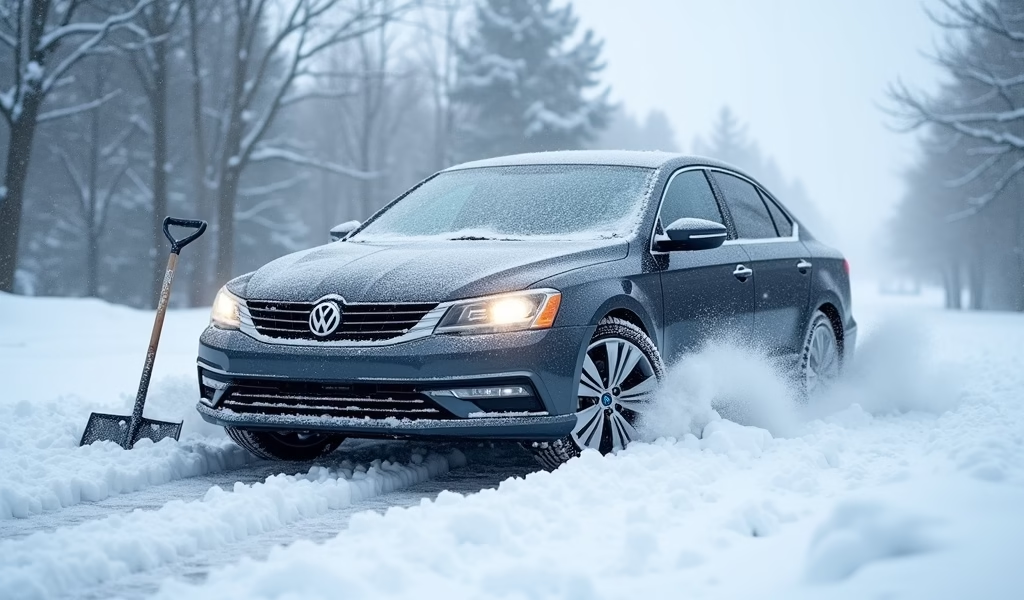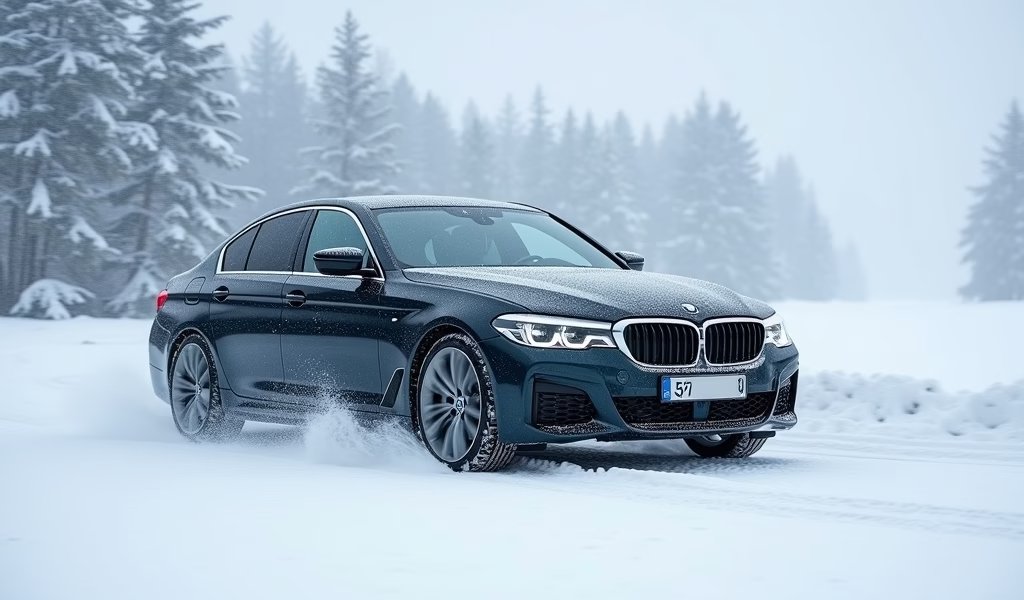Overview
Front-wheel drive vehicles perform well in snow due to their weight distribution advantage, but require winter tires and proper driving techniques to maximize safety and performance. The article provides detailed maintenance tips, driving strategies, and comparisons with other drivetrains, concluding that most drivers can navigate winter effectively with a properly equipped FWD car.
Table of Contents
- Understanding FWD in Snow: The Basics
- How FWD Works in Snowy Conditions
- Winter Tires: Your FWD’s Best Friend
- Essential Driving Techniques for FWD Vehicles in Snow
- 5 Proven Maintenance Tips for FWD Cars in Winter
- FWD vs Other Drivetrains in Snow
- Conclusion
- Frequently Asked Questions
Understanding FWD in Snow: The Basics
As a mechanic with over 15 years of experience, I’ve heard this question countless times: is FWD good in snow? The short answer is yes, front-wheel drive vehicles can perform quite well in snowy conditions, but there’s more to the story. Front-wheel drive (FWD) has become the most common drivetrain in passenger cars for good reasons – it’s cost-effective, fuel-efficient, and surprisingly capable in winter weather.
When we talk about how front-wheel drive handles in snow, we need to understand what makes it different from other drivetrains. In FWD vehicles, the engine sends power to the front wheels, which are also responsible for steering. This design creates an inherent advantage: the weight of the engine sits directly above the driven wheels, increasing traction where you need it most.
During my years at the shop, I’ve noticed that many drivers underestimate their FWD vehicles in winter. With proper preparation and driving techniques, your front-wheel drive car can be a reliable winter companion. The key is understanding its strengths and limitations, then working with them rather than against them.
How FWD Works in Snowy Conditions
Let’s pop the hood on the mechanics of why is FWD good in snow situations. The design of front-wheel drive creates a natural weight advantage. With the engine, transmission, and most major components sitting over the drive wheels, you get better traction right where power is being applied to the road. This is particularly helpful when climbing snowy hills or navigating slippery intersections.
One of the primary benefits of FWD in winter is its predictable handling characteristics. When traction is lost in a front-wheel drive vehicle, it tends to understeer – meaning the front wheels slide straight ahead rather than turning as intended. While this might sound concerning, it’s actually more intuitive for most drivers to correct than the oversteer common in rear-wheel drive vehicles, which can cause the rear end to swing out unexpectedly.
Another advantage is the drivetrain’s simplicity. With fewer components than all-wheel drive or four-wheel drive systems, FWD vehicles generally weigh less, which can improve fuel economy even in winter when efficiency typically drops. The simpler design also means fewer potential failure points when facing the harsh elements of winter driving.
Remember though, while FWD offers these advantages, it’s not a magic solution for winter driving. The system still has limitations, particularly when it comes to accelerating from a standstill on very slippery surfaces or navigating deep snow. This is where proper winter preparation becomes essential.

Winter Tires: Your FWD’s Best Friend
If there’s one piece of advice I give every FWD owner before winter hits, it’s this: invest in quality winter tires. They’re not just an accessory – they’re a necessity that transforms your vehicle’s performance in cold weather. In fact, studies from Consumer Reports show that winter tires can improve braking distances by up to 30% on snow compared to all-season tires.
Winter tires are designed with special rubber compounds that remain flexible in frigid temperatures, unlike all-season or summer tires that harden and lose grip when the mercury drops. The tread patterns are also specifically engineered to channel snow and slush while providing biting edges that grip ice.
Here’s what you should know about winter tires for your FWD vehicle:
- Install a complete set of four winter tires, not just the front two. This ensures balanced handling and braking.
- Look for the mountain and snowflake symbol on the sidewall, indicating the tire meets specific snow traction performance requirements.
- Consider narrower tires for winter, as they can cut through snow better than wider options.
- Replace winter tires when tread depth reaches 6/32 inch to maintain optimal snow performance.
I’ve seen dramatic differences in how FWD cars handle winter conditions simply by switching to proper winter tires. One customer with a modest sedan was struggling with her daily commute until we installed quality winter rubber. The transformation was immediate – hills she once feared became manageable, and her confidence behind the wheel skyrocketed.
Remember that even the best winter tires have limitations. They won’t turn your FWD car into an off-road monster, but they will significantly improve your safety margin and handling in most winter driving scenarios you’ll encounter.
Essential Driving Techniques for FWD Vehicles in Snow
Driving a front-wheel drive vehicle in snow requires some technique adjustments. Over my years helping customers prepare for winter, I’ve developed some proven methods that make a world of difference. The good news is that these techniques are fairly intuitive once you practice them a few times.
First and foremost, gentleness is your friend. Smooth, gradual inputs on all controls – accelerator, brakes, and steering – help maintain the limited traction you have on snow and ice. Jabbing at the pedals or cranking the wheel suddenly can quickly overcome available grip and leave you sliding.
When starting from a stop on slippery surfaces, try this technique I share with all my customers: Apply gentle, progressive pressure to the accelerator. If you feel the wheels beginning to spin, ease off slightly until they regain traction, then gently reapply pressure. Think of it as finding the sweet spot between too much power (wheel spin) and too little (stalling).
For uphill climbs, momentum is crucial in FWD vehicles. Unlike AWD systems, which can often power their way up slippery inclines from a standstill, front-wheel drive cars benefit from a running start when possible. Build some gentle speed before reaching the hill, then maintain steady, light throttle as you climb.
When descending hills, use your transmission to help control speed. Shifting to a lower gear (or using the “L” or “2” settings in automatic transmissions) provides engine braking that helps maintain control without risking wheel lockup. This technique saves your brakes and provides more predictable handling.
For cornering in snow with FWD, remember this sequence: brake, turn, accelerate. Complete most of your braking in a straight line before the turn, then gradually apply power as you exit the corner. This technique utilizes the front-wheel drive layout effectively, as the gentle acceleration helps pull the car through the turn once you’ve established your line.
If you do feel your FWD vehicle beginning to understeer (plow forward instead of turning), resist the urge to add more steering input. Instead, gently ease off the throttle while maintaining your steering angle. As the front wheels regain traction, the car will begin to respond to your steering inputs again.
5 Proven Maintenance Tips for FWD Cars in Winter
Beyond driving techniques and tire selection, proper maintenance plays a crucial role in how well your FWD vehicle handles winter conditions. Here are five proven maintenance tips I’ve developed over years of preparing vehicles for harsh winters:
1. Battery Care is Critical
Cold weather is brutal on batteries, reducing their capacity by up to 50% in freezing temperatures. Have your battery tested before winter arrives – a battery that works fine in summer might fail on the first cold morning. Most batteries last 3-5 years, but if yours is approaching that age, consider proactive replacement before winter. Clean any corrosion from terminals and ensure connections are tight.
2. Maintain Proper Tire Pressure
Tire pressure drops approximately 1 PSI for every 10°F decrease in temperature. Underinflated tires reduce handling precision and can be dangerous, while overinflated tires reduce the contact patch needed for traction. Check pressures monthly throughout winter, ideally when tires are cold. The correct pressure is listed on your driver’s doorjamb sticker, not the tire sidewall (which shows maximum pressure).
3. Ensure Optimal Visibility
Winter driving demands perfect visibility. Replace wiper blades that show signs of stiffening, cracking, or ineffective cleaning. Consider winter-specific wiper blades with robust frames that resist ice buildup. Keep washer fluid reservoirs filled with winter-grade fluid rated to at least -20°F. Check that all exterior lights are functioning properly, as earlier sunsets mean more driving in darkness.
4. Inspect Front-End Components
Your FWD system relies heavily on the front suspension and steering components. Before winter, have your mechanic check tie rod ends, ball joints, CV joints, and wheel bearings. Listen for clicking noises when turning (especially CV joints) or clunking sounds over bumps (potentially worn struts or ball joints). These components face added stress in winter conditions and can affect your car’s handling if compromised.
5. Maintain Fluid Quality
Fluids are the lifeblood of your vehicle, and winter puts special demands on them. Ensure your antifreeze is at the proper concentration to prevent freezing (typically a 50/50 mix with water provides protection to about -34°F). Consider switching to lower-viscosity oil for winter if your manufacturer recommends it, as it flows more easily at startup in cold temperatures. Check transmission fluid levels and condition, as the transmission works harder in slippery conditions with frequent wheel spin.
Following these maintenance tips won’t just improve your FWD vehicle’s winter performance – they’ll also help prevent costly repairs and breakdowns during the most inconvenient time of year. I’ve seen too many customers stranded by issues that could have been prevented with basic winter preparation.

FWD vs Other Drivetrains in Snow
Let’s talk about how front-wheel drive stacks up against other drivetrain options when the white stuff starts falling. I’ve worked on all types of vehicles over the years, and each system has distinct advantages and disadvantages in winter driving.
Compared to rear-wheel drive (RWD), FWD generally performs better in snow for everyday drivers. The weight of the engine over the drive wheels provides a traction advantage that RWD vehicles lack. Additionally, RWD vehicles tend to fishtail more easily in slippery conditions, which can be challenging for drivers without specialized winter driving skills. That said, some RWD vehicles with advanced traction control systems and proper winter tires can perform admirably.
All-wheel drive (AWD) and four-wheel drive (4WD) systems do offer advantages over FWD in certain winter scenarios. The ability to power all four wheels simultaneously provides better acceleration on slippery surfaces and can help navigate deeper snow. According to research from the Insurance Institute for Highway Safety, AWD vehicles can accelerate more confidently in slippery conditions.
However, here’s what many people misunderstand: AWD and 4WD primarily help with acceleration and forward momentum – they don’t significantly improve braking or cornering in snow compared to FWD. All vehicles, regardless of drivetrain, rely on their tires’ contact patches for stopping and turning. This is why winter tires remain critical even on AWD and 4WD vehicles.
From a practical standpoint, FWD offers several advantages over AWD/4WD for many drivers:
- Better fuel economy due to less mechanical complexity and weight
- Lower initial purchase cost and typically lower maintenance expenses
- Simpler design with fewer components that could potentially fail
- More interior space in many vehicle designs (due to more compact drivetrain)
For the average driver facing typical winter conditions on maintained roads, a well-equipped FWD vehicle with quality winter tires and proper driving technique will safely handle most situations. The extra cost and complexity of AWD might not be justified unless you regularly face extreme conditions or need to drive in unplowed areas.
I’ve had many customers who initially thought they needed to trade their FWD vehicle for an AWD model to handle winter, only to discover that proper winter tires and some driving technique adjustments solved their issues at a fraction of the cost. That said, if you live in an area with frequent heavy snowfall or steep, unplowed roads, the additional capability of AWD or 4WD might be worth considering.
Conclusion
After diving deep into the question “is FWD good in snow,” the evidence clearly shows that front-wheel drive vehicles can indeed perform admirably in winter conditions when properly equipped and driven. The natural weight distribution advantage, with the engine positioned over the drive wheels, provides inherent benefits for traction in slippery conditions.
The key takeaway isn’t that FWD is perfect for snow – no drivetrain is – but rather that it offers a practical balance of winter capability, fuel efficiency, and cost-effectiveness that works well for most drivers in most winter scenarios. With the right preparation, particularly quality winter tires, and by applying proper driving techniques, your FWD vehicle can safely navigate through most winter weather you’re likely to encounter.
Remember that the driver behind the wheel ultimately matters more than the wheels being driven. Patience, smooth inputs, and respecting the limitations of any vehicle in winter conditions are universal principles that apply regardless of drivetrain type. By combining these attitudes with the specific maintenance tips and driving techniques we’ve discussed, you’ll maximize your FWD vehicle’s winter performance and safety.
Winter driving doesn’t have to be a white-knuckle experience. With the right knowledge and preparation, you can approach the snowy season with confidence in your front-wheel drive vehicle. Stay safe out there, and remember that a well-maintained FWD car with proper winter tires will handle most winter driving situations with surprising capability.
Frequently Asked Questions
Is FWD better than AWD in snow?
AWD typically outperforms FWD in acceleration and deep snow navigation. However, FWD with winter tires often performs adequately for most winter driving situations at a lower cost.
Do I need winter tires on my FWD car?
Yes, winter tires are highly recommended for FWD vehicles in snowy conditions. They dramatically improve traction, braking, and cornering compared to all-season tires in temperatures below 45°F.
What speed should I drive my FWD car in snow?
Reduce your normal speed by at least 25-50% depending on conditions. The appropriate speed depends on visibility, road conditions, and your vehicle’s capabilities with its current tire setup.
Why does my FWD car slide in snow?
Sliding occurs when tires lose traction with the road surface. This can happen due to inappropriate tires, excessive speed for conditions, or abrupt steering/braking inputs.
Should I turn off traction control in snow with FWD?
Generally, no—modern traction control systems help maintain stability in slippery conditions. However, when stuck in deep snow, temporarily disabling traction control can sometimes help you rock the vehicle free.

